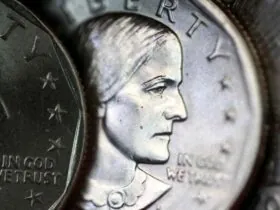In the world of coin collecting, few items generate as much excitement as the Kennedy half-dollar. This particular coin holds a unique place in numismatic history, both for its design and its connection to a pivotal moment in American history—the assassination of President John F. Kennedy in 1963. Released in the year following his tragic death, the Kennedy half-dollar has become a sought-after collector’s item, with some examples reaching remarkable prices.
A Historical Coin: The Birth of the Kennedy Half-Dollar
This Article Includes [hide]
The Kennedy half-dollar was introduced in 1964 to honor the late President Kennedy, whose assassination in November 1963 shocked the nation. The coin’s design was selected just months after his death and was meant as a tribute to the president’s enduring influence and legacy. It quickly entered circulation, making it not only a commemorative item but also a piece of American history available to the public.
What sets this coin apart from others is its deeply symbolic design, featuring Kennedy’s profile on the obverse and the Presidential Seal on the reverse. The seal, with its eagle clutching an olive branch and arrows, reflects the nation’s ideals of peace and strength, adding layers of meaning to the coin’s appearance.
The Kennedy Half-Dollar’s Design: A Symbol of Unity
The Kennedy half-dollar’s design carries significant symbolic weight. On the obverse, the coin features a striking profile of President Kennedy, accompanied by the words “Liberty” and “In God We Trust.” These inscriptions serve as a reminder of the nation’s values and the leadership Kennedy embodied.
The reverse side showcases the Presidential Seal, where an eagle holds an olive branch in one talon and 13 arrows in the other, symbolizing peace and readiness for defense. Encircling this emblem is the phrase “E Pluribus Unum,” meaning “Out of Many, One,” a powerful declaration of the unity of the United States.
Eleven weeks after JFK assassination, Kennedy half dollar was first produced today 1964: #NARA pic.twitter.com/uqw83BHHB4
— Michael Beschloss (@BeschlossDC) February 11, 2019
The Shift in Silver Content: From 90% to 40%
The Kennedy half-dollar underwent a significant change in its composition over the years, adding to its desirability among collectors. The initial 1964 minting included 90% silver, making the coins especially valuable. This high silver content made the coin not only a piece of history but also a precious metal investment. As a result, well-preserved examples from this year can fetch thousands of dollars today.
However, in 1965, as part of a move to reduce the costs of minting, the silver content was decreased to 40% in the Kennedy half-dollar. This change meant that while the coin retained some of its precious metal value, it was not as highly prized as the earlier silver-heavy versions.
By 1971, the United States Mint fully transitioned the Kennedy half-dollar to a copper-nickel clad composition, removing silver entirely. This marked a turning point in the coin’s history, as later versions, while still valuable to some collectors, are far less coveted than their 1964 predecessors.
The Rarity and Value of the Kennedy Half-Dollar
While the Kennedy half-dollar remains in circulation, certain versions are far more valuable than others. Coins minted between 1964 and 1970, especially those in pristine condition, are highly prized by collectors. These early high-silver versions, if well-preserved, can reach prices of up to $15,000 in auctions. On the other hand, later coins, especially those with a copper-nickel composition, typically have a lower value and are sold for just a few dollars or more, depending on their condition.
The rarity of these early Kennedy half-dollars, combined with their historical significance, drives their price in the marketplace. Collectors are often willing to pay a premium for coins that have retained their original condition, with factors such as scratch-free surfaces, visible details, and well-defined engravings all contributing to a coin’s value.
CAC made a very clear statement with this coin ….The 1964 Accented Hair Kennedy Half Dollar is one of the most sought-after varieties of the long-running Kennedy series. Not only is it a first-year issue, but it was also the first variety of the proof run and was directly… pic.twitter.com/ZDOnIxhz38
— Mrs. Johanna van Gogh-Bonger🌻 (@1Bae_Bey) December 6, 2024
Conclusion: The Enduring Appeal of the Kennedy Half-Dollar
The Kennedy half-dollar remains a beloved piece of American numismatic history. Whether it is due to the coin’s striking design, its connection to a beloved president, or its composition of precious metal, collectors continue to seek out these coins as a valuable and meaningful addition to their collections. For those lucky enough to own a pristine example from 1964, the coin can be more than just a piece of currency; it is a tangible reminder of an era of profound change and a tribute to a president who left an indelible mark on the country.







Leave a Reply